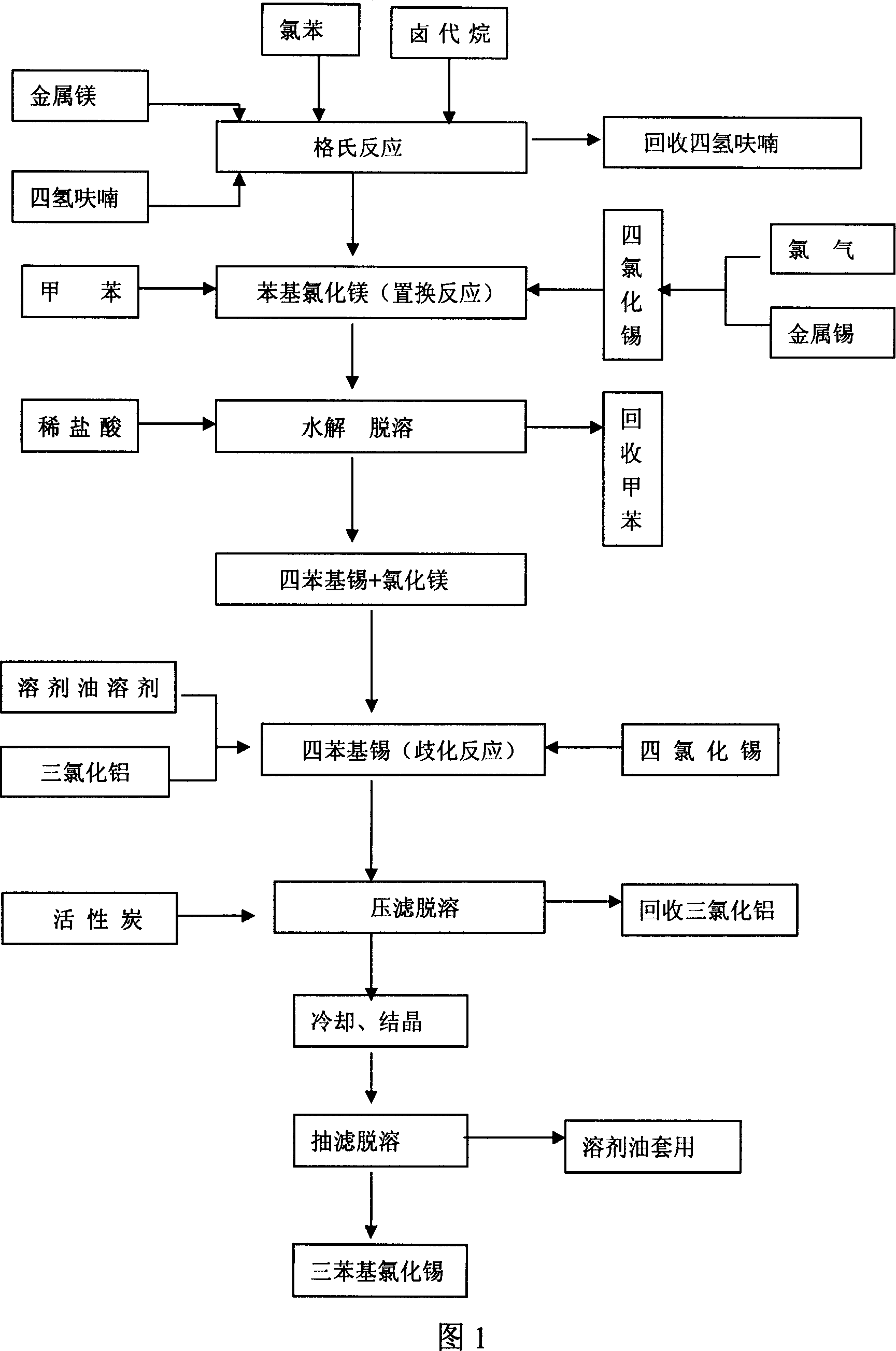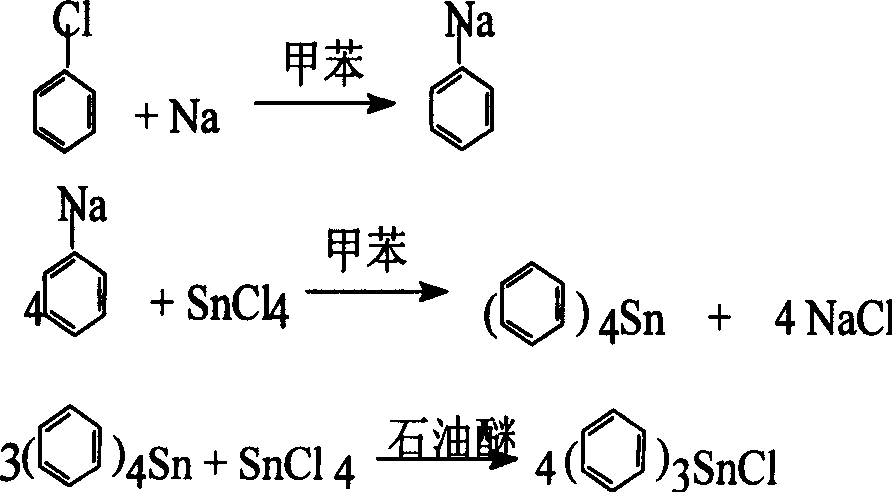Production of tripheny-stannic chloride
A technology of triphenyltin chloride and a new method, applied in the direction of tin organic compounds, etc., can solve the problems of large environmental impact, large amount of sodium salt, difficult handling and the like
- Summary
- Abstract
- Description
- Claims
- Application Information
AI Technical Summary
Problems solved by technology
Method used
Image
Examples
specific Embodiment approach
[0024] The raw materials used in the present invention are: metal magnesium, tetrahydrofuran, bromoethane, chlorobenzene, toluene, 120 # Mineral spirits, tin and chlorine.
[0025] Concrete preparation steps are as follows:
[0026] ①The preparation of tin tetrachloride is to react tin tetrachloride with metal tin and chlorine gas in a closed container; the temperature is controlled below 70°C;
[0027] ② In tetrahydrofuran solvent, chlorobenzene and metal magnesium undergo Grignard reaction, the temperature is controlled below 80°C, and the reaction is carried out for 5 to 6 hours to obtain phenylmagnesium chloride, using haloalkane as the initiator;
[0028] ⑧Put phenylmagnesium chloride in toluene solvent, slowly add tin tetrachloride dropwise to carry out displacement reaction, control the temperature at 20°C-30°C, raise the temperature to 95°C-105°C after dropping, keep the temperature for 4 hours, Get tetraphenyltin and by-product magnesium chloride;
[0029] ④ Dissol...
PUM
 Login to View More
Login to View More Abstract
Description
Claims
Application Information
 Login to View More
Login to View More - R&D
- Intellectual Property
- Life Sciences
- Materials
- Tech Scout
- Unparalleled Data Quality
- Higher Quality Content
- 60% Fewer Hallucinations
Browse by: Latest US Patents, China's latest patents, Technical Efficacy Thesaurus, Application Domain, Technology Topic, Popular Technical Reports.
© 2025 PatSnap. All rights reserved.Legal|Privacy policy|Modern Slavery Act Transparency Statement|Sitemap|About US| Contact US: help@patsnap.com


